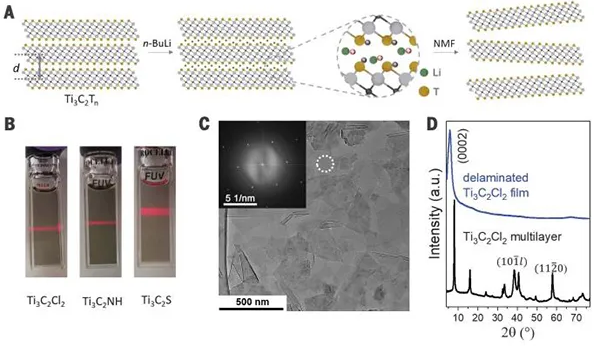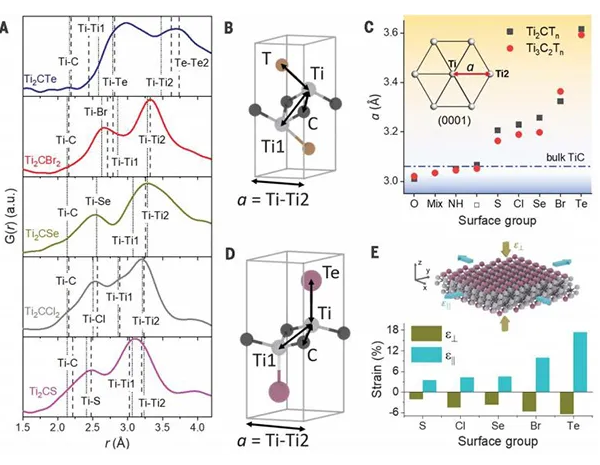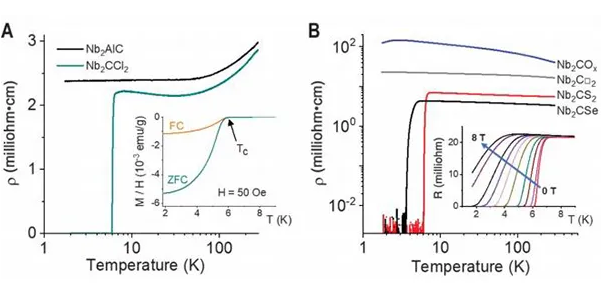The latest science in the field of MXene: surface modification and superconductivity of MXene
QQ Academic Group: 1092348845
Detailed
Recently, Professor Dmitri V. Talapin from the University of Chicago (corresponding author) introduced the general strategy of re-modification and elimination of surface groups through substitution and elimination reactions in molten inorganic salts, thereby achieving the modification of O, NH, and MXene on MXene. S, Cl, Br, Se and Te end groups. These MXene materials with different components exhibit different structures and electronic properties. Specifically, it is well known that two-dimensional (2D) transition metal carbides and nitrides (MXenes) have been widely studied for use in supercapacitors, batteries, electromagnetic interference shielding, composite materials and catalysts. MXene is usually synthesized from the corresponding MAX phase, where M represents a transition metal (such as Ti, Nb, Mo, V, W, etc.), and X represents C or N. Among them, MXenes is mainly obtained by extracting the weaker A-site elements (such as Al, Ga, Si, etc.) from the MAX phase in a mixed solution of HF acid or hydrochloric acid and fluoride. It has the characteristics of high specific surface area and high conductivity of graphene, and also has the advantages of flexible and adjustable composition and controllable minimum nano-layer thickness. Unlike the surfaces of other 2D materials, such as graphene and transition metal halide, these functional groups can be chemically modified. Recent theoretical studies predict that the selective termination of MXene with different surface groups will exhibit excellent properties, such as opening or closing the band gap, room temperature electron mobility exceeding 104 cm2/Vs, semi-metallicity and 2D ferromagnetism. The multifunctional chemical conversion of surface functional groups in two-dimensional transition metal carbides has opened up a design space that has not been explored before for this wide range of functional materials. The surface groups control the distance between atoms in the MXene lattice. Compared with the unstrained titanium carbide lattice, Tin+1Cn (n=1, 2) MXenes modified with telluride (Te2-) ligand shows a huge ( > 18%) The interface lattice expands. In addition, the phenomenon of superconductivity in the low-temperature region was found in the corresponding MXenes materials of Nb2C, which is mainly due to the adjustment of the surface modification effect on the lattice axis stress, phonon frequency, and electron-phonon coupling strength. The superconducting characteristics. Related research results were published online on Science on August 21, 2020 with the title "Covalent surface modifications and superconductivity of two-dimensional metal carbide MXenes". [Picture Guide] Figure 1. Surface reaction of MXene in molten inorganic salt

Figure 2. Layering of multilayer Ti3C2Tn MXenes

Figure 3. Surface groups induce huge strain of MXene lattice

Figure 4. Electron transport and superconductivity of Nb2CTn MXenes

Literature link: "Covalent surface modifications and superconductivity of two-dimensional metal carbide MXenes" (Science, 2020, 10.1126 / science.aba8311)
This article is contributed by CYM.
Article source: Nanoman
This information is from the Internet for academic exchanges. If there is any infringement, please contact us and delete it immediately
- Previous: How many oxygen on the
- Next: MXene breakthrough: Na


 mxene academic
mxene academic